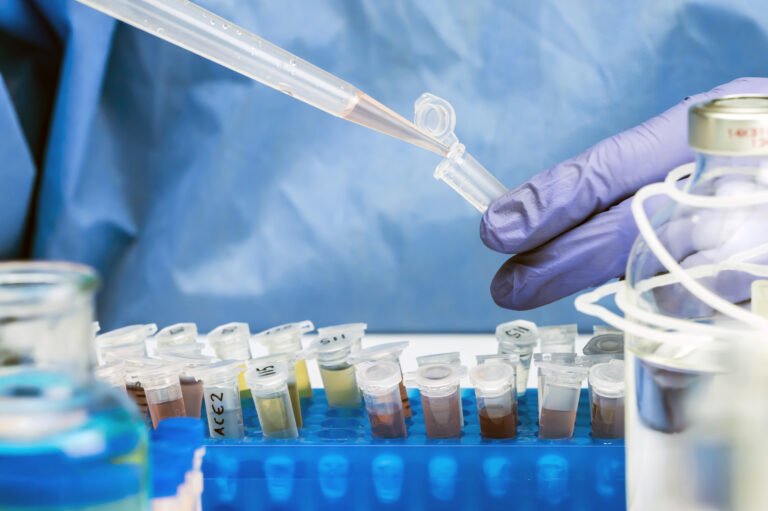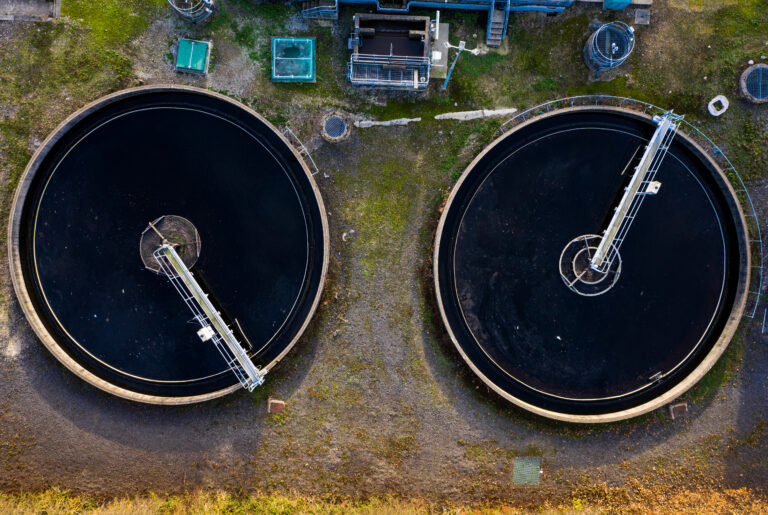IS WASTEWATER SURVEILLANCE THE ANSWER TO PUBLIC HELATH MONITORING?
Wastewater surveillance has gained prominence across the world since its use during the Covid-19 pandemic. Also known as Wastewater-Based Epidemiology – (WBE for short), it can give fast and cost-effective insight into; the spread of infection diseases; emergence of new pathogens/variants; community drug use; and markers of antimicrobial resistance for local authorities and national governments and their public health planning.
There are clear wins in the use of wastewater surveillance, but its widespread adoption relies on investment in the required infrastructure, reporting systems and processes to make its data of real value, both at a local and an international level.
In this article we discuss the growth of wastewater surveillance, its applications & benefits and its potential for future use.

Introduction to Wastewater Surveillance
A simple yet effective method
Wastewater surveillance has existed for decades, with one of the first widely-reported uses of WBE being a project to understand the spread of polio led by team of scientists in the 1930s. It is typically used not only to monitor infectious pathogens, but also the use of pharmaceuticals (both prescribed and illicit) within local communities.
It works by analysing chemicals, pathogens and biomarkers that are shed through urine and faeces into public wastewater systems – using their concentrations to understand trends and patterns in any given population. Samples are taken from the wastewater flow before they are analysed and the associated data processed, interpreted and reported.
Wastewater Surveillance During Covid-19
An unexpected ally in the testing strategy
The Covid-19 pandemic ignited the use of wastewater monitoring across the world, with many countries using it to understand patterns and trends in the spread of the virus and some using WBE for the first time. Some governments even introduced formal national wastewater surveillance systems.
As vaccinations led to more asymptomatic cases and testing schedules were loosened, WBE played an increasing role in ongoing tracking of virus levels in populations – giving consistent data in a way that did not rely on individual testing and even provided early warning indicators in advance of an outbreak. It also allowed for early detection of new variants.
The UK Health Security Agency announced early in 2023 that it would cease the weekly household Covid infection testing report, instead replacing it with “Wastewater-based epidemiology…likely to be of significant importance in the future, both domestically and internationally….exploring further opportunities for this technology.”


Why Wastewater Surveillance?
A cost-effective solution with reliable and unbiased data.
The Covid-19 pandemic ignited the use of wastewater monitoring across the world, with many countries using it to understand patterns and trends in the spread of the virus and some using WBE for the first time. Some governments even introduced formal national wastewater surveillance systems.
As vaccinations led to more asymptomatic cases and testing schedules were loosened, WBE played an increasing role in ongoing tracking of virus levels in populations – giving consistent data in a way that did not rely on individual testing and even provided early warning indicators in advance of an outbreak. It also allowed for early detection of new variants.
The UK Health Security Agency announced early in 2023 that it would cease the weekly household Covid infection testing report, instead replacing it with “Wastewater-based epidemiology…likely to be of significant importance in the future, both domestically and internationally….exploring further opportunities for this technology.”
Costs
The cost of testing individuals can be extremely costly. During the pandemic, the UK government spent almost 30bn on the Test & Trace scheme. Wastewater surveillance, by comparison, is extremely cost effective, allowing more reliable and consistent testing of a whole population at one time.
Non-Invasive
Wastewater can be sampled anonymously and without any reliance on human interaction. This not only removes the barrier of perceived stigma from data subjects, but also means multiple people can be tested simultaneously without any effort on their part.
Unbiased
Individual testing relies on the consent of data subjects, which can cause bias in not only the selection of people, but also the analysis of conjunctive health-related data of the subjects. Wastewater epidemiology, by contrast, is an unbiased testing method, with no individual data available.
Quickness
The sheer ability to sample and analyse multiple subjects (sometimes up to hundreds of thousands) through one test, rather than individual ones, drastically reduces the required resources and processing time involved to collate widespread data. Its ability to detect pathogens even when subjects are asymptomatic means it is faster at identifying outbreaks, and data outputs can be quickly connected to alert systems for those responsible for acting.
Reliable Data
Relying on individuals to carry out and report on individual tests leaves the data open to inaccuracy. Wastewater surveillance is set up and processed by expert teams, who understand their field and the importance of data controls. WBE is also able to give more detailed data than some traditional monitoring methods. For example, monitoring the consumption of prescribed drugs through prescription levels does not take into account those drugs that are not consumed. Conversely, WBE only measures the metabolites of those drugs that have actually been taken.
Uses of Wastewater Surveillance
A flexible option for public health monitoring
WBE is increasingly being seen as a cost-effective way of gathering reliable data and and there are active efforts across the globe to increase its use in public health tracking while exploring further opportunities for the sharing of data on a national and international scale.
Some of its growing uses include:
1. Tracking infectious diseases and outbreaks
Much as with the Covid-19 pandemic, many other disease levels can be tracked through wastewater surveillance. Any virus/bacterial infection where pathogens are reliably shed through urine and/or faeces can generate the necessary biomarkers to be sampled.
This is important not only for new outbreaks, but also for new variants of existing pandemics and diseases – as well as to see how a particular outbreak is spreading. By tracking not only the presence but also the concentration of the shed load, data on the severity of an outbreak can be generated. Diseases such as polio, covid, measles, hepatitis and norovirus have all been successfully monitored through wastewater surveillance. In 2021, India set up a wastewater surveillance system to detect cases of Mpox and influenza for example. In the US, some aviation companies are already collaborating to test the sewage generated on flights, in an effort to understand how this could be used to monitor and restrict international spread of diseases.
Some work is still to be done in validating the reliability of all WBE for this purpose, but it is certainly proving a useful tool for many governments.
2. Illicit drug consumption
Many drugs generate metabolites when being processed by the human body, which are then shed in urine/faeces. Alcohol, nicotine, meth, amphetamine, cocaine and many more non-prescribed drugs give off reliable biomarkers following metabolism. The European Monitoring Centre for Drugs & Addiction has a fascinating geographical chart to show usage across the EU https://www.emcdda.europa.eu/publications/html/pods/waste-water-analysis_en. Reasons for tracking illicit drug consumption include; planning for public health spend; using the insight to build public health campaigns; cross-referencing the data with other sources (e.g. fatal overdoses); and feeding into law enforcement agencies to identify where and when drugs are entering society.
3. Prescribed drugs consumption
WBE can be used to track discrepancies in the levels of prescribed drugs vs. levels of the drugs actually taken. Many people do not finish courses/discard drugs/sell them on/access them from illegal sources – merely looking at prescription data is not always reliable in giving a picture of how populations are using drugs. Again, much as with illegal drugs, this data can help inform public health campaigns (e.g. finish your antibiotics course) and target areas of misuse – in particular prescription drugs being sourced from non-regulated suppliers.
The concentration levels of drugs can also give a picture into the prevalence of illnesses/conditions within local populations. For example WBE has been used to track levels of erectile disfunction in local populations through metabolites of Viagra active ingredients and the rising trend in weight loss drugs is also being monitored in some countries – all drug types that carry stigma and may force people to seek illegal supply.
4. Detection of AMR
Antimicrobial Resistance (AMR) happens when bacteria, viruses, parasites and fungi mutate enough that they are no longer treatable with existing medicines. This makes them much harder to treat and poses a real risk to society. WBE can detect the presence of using metagenomic techniques to track resistomes in AM genes and give data on their prevalence, type and spread.
5. Understanding Impact of Hazardous Substances
Wastewater monitoring for hazardous and toxic materials is already widespread – being used by regulating authorities such as the Environment Agency to check that water companies and industrial operators are not polluting waters. This type of monitoring can also be used to track levels of hazardous substances such as plastics, pesticides and chemicals that have been ingested by humans. It can then be used in this way to measure the public exposure to potentially harmful substances – even with large-scale leaks during negative industrial events (e.g. nuclear waste/chemical spills). The data can then be correlated to incidences of illnesses and conditions that could be linked to public exposure to these hazardous substances.


Future of Wastewater Surveillance
A developing opportunity
The opportunity for use of wastewater surveillance in public health monitoring and planning is clear – across a range of applications. Future disease outbreaks, drug consumption trends and levels of exposure of communities to hazardous substances and bacteria all hold the potential to be tracked through WBE. Its quick assimilation of data on large numbers of subjects makes it a cost-effective and speedy option for many countries going forward.
Key to adoption and ongoing success is the level of investment in collaborative, comprehensive reporting systems and the required R&D and expertise to tackle any current concerns around unreliability of data. Automation, AI and robotics may all play their part in moving forward the opportunity for wastewater surveillance to create a sustainable model of WBE that can be adopted on an international scale.
Until then ongoing individual projects and concept testing will continue to give insight into the costs and benefits of how it could be best used going forward. Since Covid-19, the world has had a glimpse into the opportunities that WBE presents and an ongoing curiosity will drive forward further understanding of the purposes for which it could be used. Whether as part of wider surveillance strategies, or as a stand-alone methodology, we’re sure wastewater surveillance will be here to stay.
Require wastewater surveillance guidance?
Talk to the team today about your requirements.